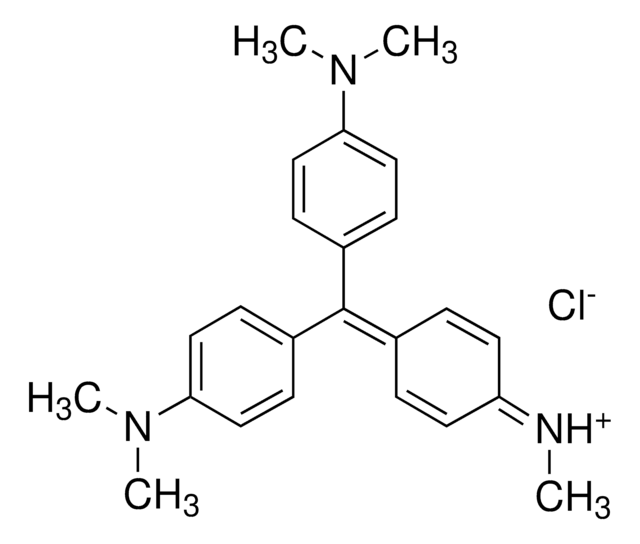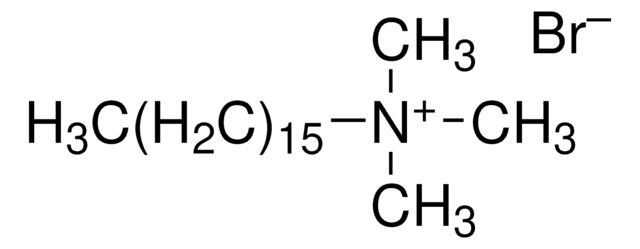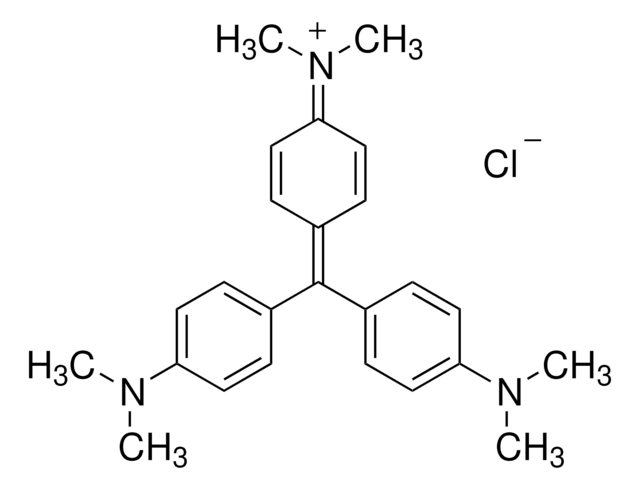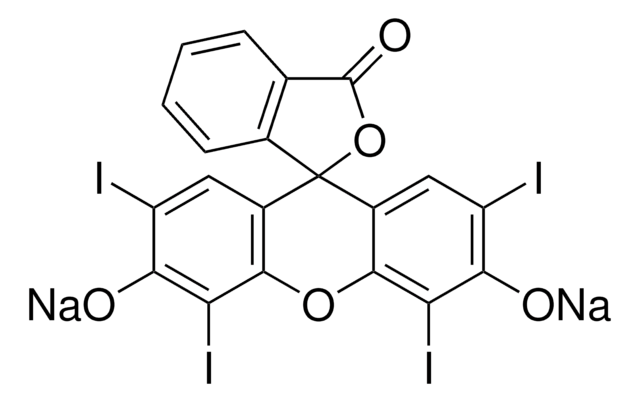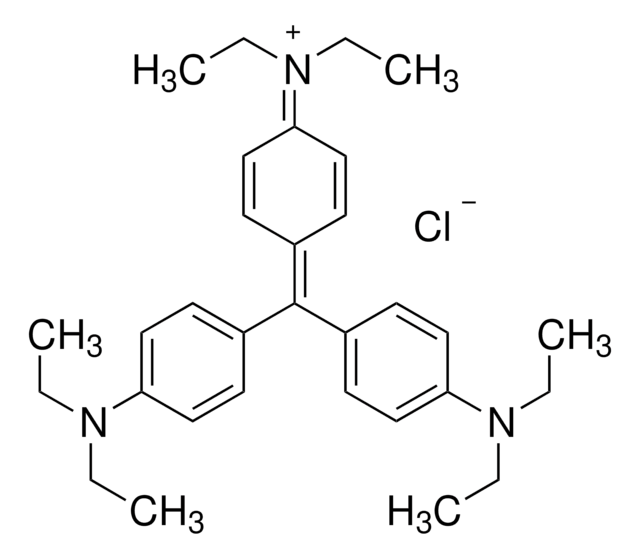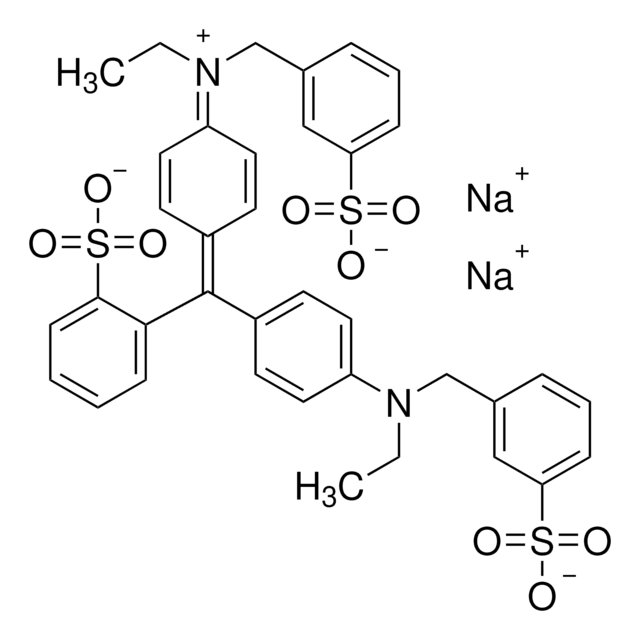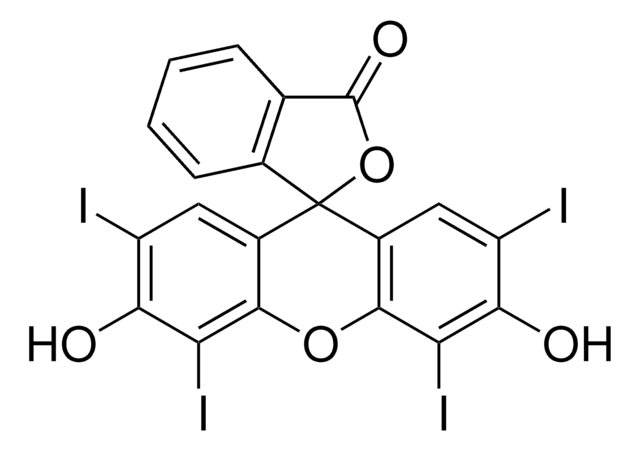228842
Ethyl Violet
cationic triarylmethane dye
Synonym(s):
Basic violet 4, Ethyl purple 6B
About This Item
Recommended Products
Quality Level
form
powder
solubility
water: 1 mg/mL
λmax
595 nm
ε (extinction coefficient)
≥12000 at 250-256 nm in water at 0.003 mg/mL
≥17000 at 304-310 nm in water at 0.003 mg/mL
application(s)
diagnostic assay manufacturing
hematology
histology
storage temp.
room temp
SMILES string
[Cl-].CCN(CC)c1ccc(cc1)C(\c2ccc(cc2)N(CC)CC)=C3/C=C\C(C=C3)=[N+](\CC)CC
InChI
1S/C31H42N3.ClH/c1-7-32(8-2)28-19-13-25(14-20-28)31(26-15-21-29(22-16-26)33(9-3)10-4)27-17-23-30(24-18-27)34(11-5)12-6;/h13-24H,7-12H2,1-6H3;1H/q+1;/p-1
InChI key
JVICFMRAVNKDOE-UHFFFAOYSA-M
Looking for similar products? Visit Product Comparison Guide
General description
Biochem/physiol Actions
Signal Word
Danger
Hazard Statements
Precautionary Statements
Hazard Classifications
Acute Tox. 4 Oral - Eye Dam. 1
Storage Class Code
11 - Combustible Solids
WGK
WGK 3
Flash Point(F)
Not applicable
Flash Point(C)
Not applicable
Personal Protective Equipment
Choose from one of the most recent versions:
Certificates of Analysis (COA)
Don't see the Right Version?
If you require a particular version, you can look up a specific certificate by the Lot or Batch number.
Already Own This Product?
Find documentation for the products that you have recently purchased in the Document Library.
Our team of scientists has experience in all areas of research including Life Science, Material Science, Chemical Synthesis, Chromatography, Analytical and many others.
Contact Technical Service